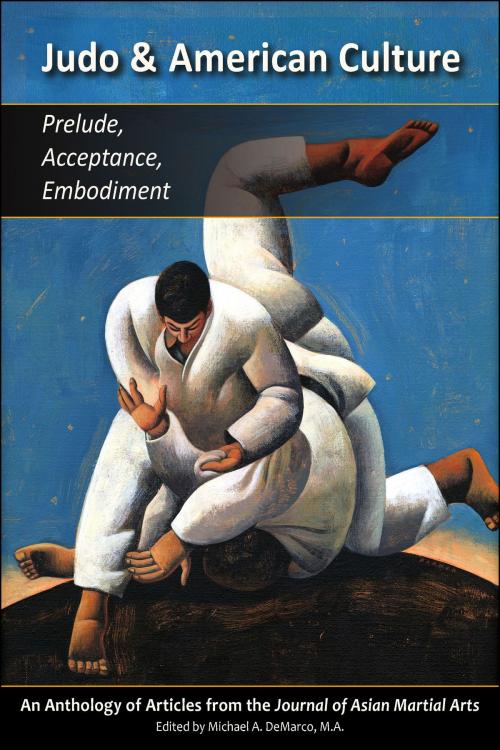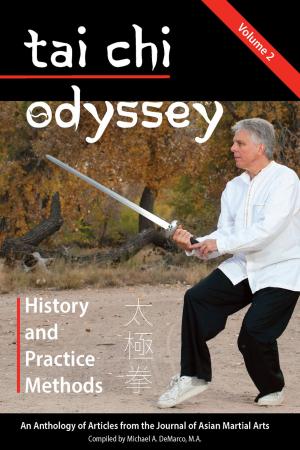Judo & American Culture — Prelude, Acceptance, Embodiment
Nonfiction, Sports, Martial Arts & Self Defence, Social & Cultural Studies, Social Science, Discrimination & Race Relations, History, Americas, United States, 20th Century| Author: | Matt Hlinak, Geoffrey Wingard, Joseph Svinth | ISBN: | 1230000483445 |
| Publisher: | Via Media Publishing | Publication: | June 12, 2015 |
| Imprint: | Language: | English |
| Author: | Matt Hlinak, Geoffrey Wingard, Joseph Svinth |
| ISBN: | 1230000483445 |
| Publisher: | Via Media Publishing |
| Publication: | June 12, 2015 |
| Imprint: | |
| Language: | English |
The origins of Asian martial arts in the United States reach back to the Pacific Rim and immigration. This anthology is dedicated to the profoundly significant period—roughly from mid-eighteenth century to the mid-nineteenth century—in which gifted Japanese taught their brand of jujutsu/judo to small groups that gradually disseminated knowledge of combatives into the American mainstream.
Wingard provides insightful coverage of the “manly arts” in America as they swept the land along with moving populations.
Hlinak analyzes Japanese-American immigration into the American West, specifically by examining a series of contests between judoka and wrestlers from 1900 to 1920 in California.
Svinth details the establishment and functioning of two important dojos in the Seattle, Washington, area, and their exhibitions, intraclub tournaments, and war-time influences on practice.
Webb’s chapter focuses on one of the early prime movers for the growth and establishment of judo in America: Vincent Tamura. His practice has roots in ancient Heike-ryu jujutsu.
Behrendt writes about polishing judo skills as an aid to build character in the fashion that Kodokan judo founder Kano Jigaro intended.
In these chapters you will find the early hotbeds of jujutsu/judo in America and see how these arts tumbled with European-American “manly arts,” making their own way across the country to form and strengthen judo centers in various states. The authors have utilized their scholarly and practical experience to present a rare view of judo as it traversed the Pacific to enrich American culture. Their writings should clarify the early history of judo in America and bring both practitioners and armchair scholars a deeper appreciation for the art.
The origins of Asian martial arts in the United States reach back to the Pacific Rim and immigration. This anthology is dedicated to the profoundly significant period—roughly from mid-eighteenth century to the mid-nineteenth century—in which gifted Japanese taught their brand of jujutsu/judo to small groups that gradually disseminated knowledge of combatives into the American mainstream.
Wingard provides insightful coverage of the “manly arts” in America as they swept the land along with moving populations.
Hlinak analyzes Japanese-American immigration into the American West, specifically by examining a series of contests between judoka and wrestlers from 1900 to 1920 in California.
Svinth details the establishment and functioning of two important dojos in the Seattle, Washington, area, and their exhibitions, intraclub tournaments, and war-time influences on practice.
Webb’s chapter focuses on one of the early prime movers for the growth and establishment of judo in America: Vincent Tamura. His practice has roots in ancient Heike-ryu jujutsu.
Behrendt writes about polishing judo skills as an aid to build character in the fashion that Kodokan judo founder Kano Jigaro intended.
In these chapters you will find the early hotbeds of jujutsu/judo in America and see how these arts tumbled with European-American “manly arts,” making their own way across the country to form and strengthen judo centers in various states. The authors have utilized their scholarly and practical experience to present a rare view of judo as it traversed the Pacific to enrich American culture. Their writings should clarify the early history of judo in America and bring both practitioners and armchair scholars a deeper appreciation for the art.















